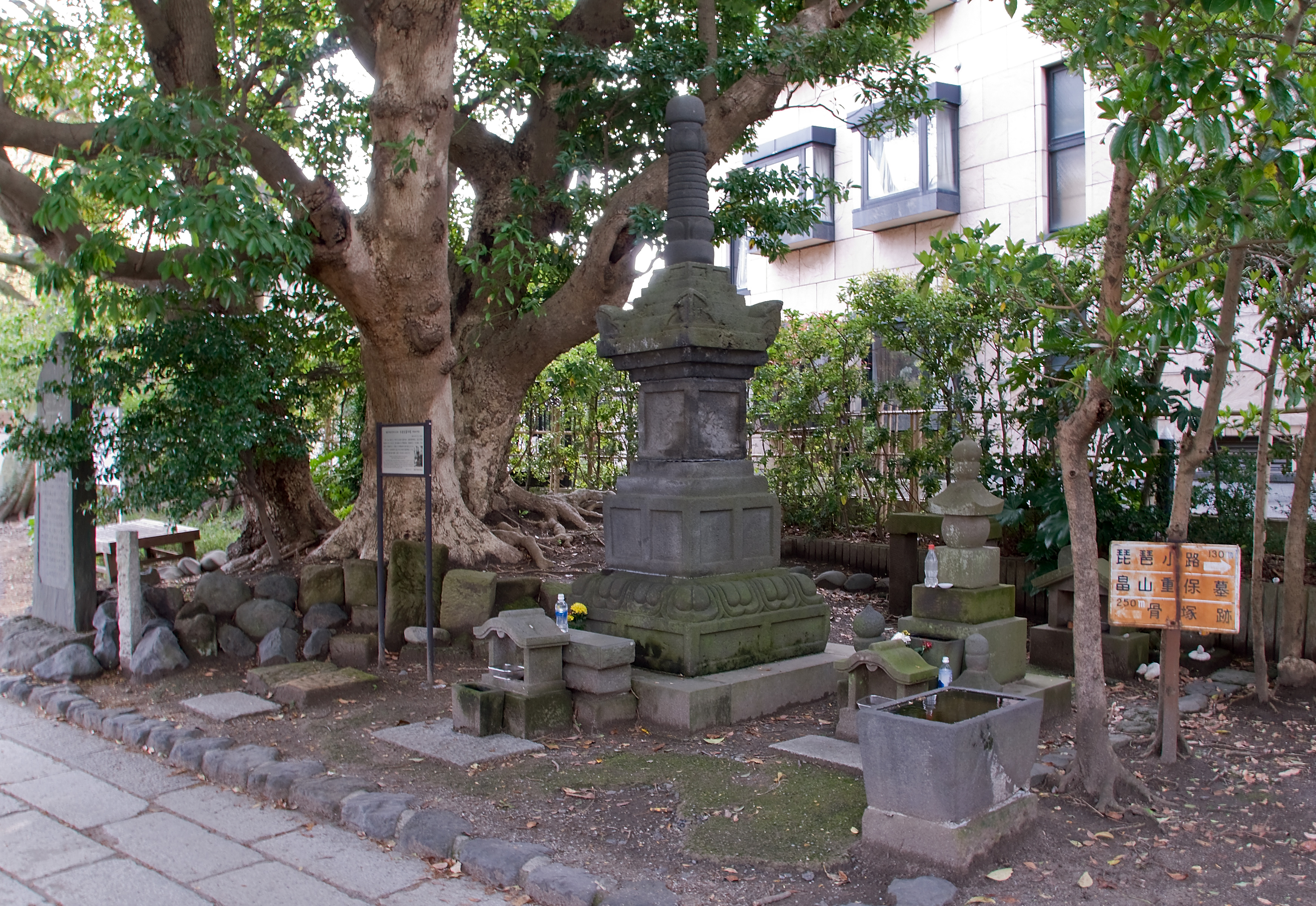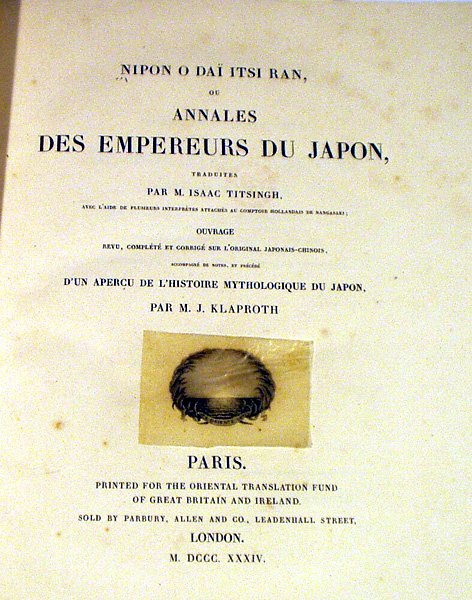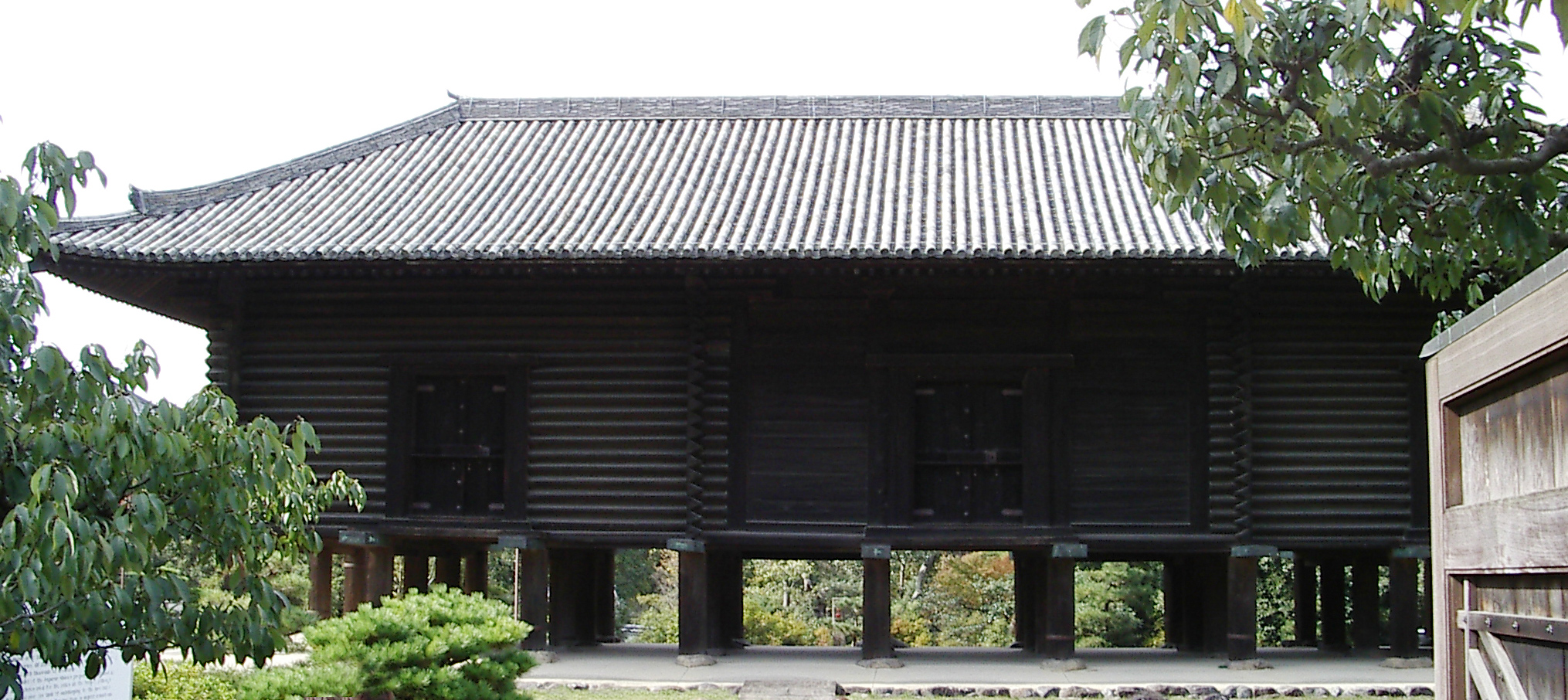|
Genkyū
was a after '' Kennin'' and before ''Ken'ei''. This period spanned the years from February 1204 through April 1206. The reigning emperor was . Change of era * 1204 : The new era name was created to mark an event or a number of events. The previous era ended and a new one commenced in ''Kennin'' 4, on the 20th day of the 2nd month of 1204.Brown, p. 340. Events of the ''Genkyū'' era * 1204 (''Genkyū 1, 10th month''): Minamoto no Sanetomo ordered Hōjō Masanori, Hōjō Tomomichi and Hatakeyama Shigeyasu to travel to Heian-kyō. These three were charged with escorting the daughter of '' dainagon'' Fujiwara-no Noboukiyo to Kamakura where she would marry Sanetomo.Titsingh, p. 227. * 1204 (''Genkyū 1, 12th month''): Two of Sanetomo's emissaries returned to Kanto with his bride-to-be; but Shigeyasu remained in Heian-kyo where he died. * 1205 (''Genkyū 2, 3rd month''): Kyoto and the provinces of the Kinai were devastated by a terrible storm; and at the time, the disaster was deeme ... [...More Info...] [...Related Items...] OR: [Wikipedia] [Google] [Baidu] |
Ken'ei
was a after '' Genkyū'' and before '' Jōgen.'' This period spanned the years from April 1206 through October 1207. The reigning emperor was . Change of era * 1206 : The new era name was created to mark an event or a number of events. The previous era ended and a new one commenced in ''Genkyū'' 3, on the 27th day of the 4th month of 1206. Events of the ''Ken'ei'' era * 1206 (''Ken'ei 1, 2nd month''): Shōgun Sanetomo's standing at court was raised to the 2nd rank of the 4th class. * 1206 (''Ken'ei 1, 7th day of the 3rd month''): The emperor planned to pay a visit to the ''sesshō'' Kujō Yoshitsune, but in the night before this visit, an unknown assassin was introduced secretly into Yoshitune's house, and he was stabbed by a spear pushed up from below the floor. No one was able to discover the perpetrator. Yoshitsune was then aged 38 years. The ''sadaijin'' Konoe Iezane succeeded Yoshitsune as ''sesshō;'' and the ''dainagon'' Fujiwara no Tadatsune became ''sadaijin.'' * 1206 ... [...More Info...] [...Related Items...] OR: [Wikipedia] [Google] [Baidu] |
Kennin
was a after ''Shōji (era), Shōji'' and before ''Genkyū.'' This period spanned the years from February 1201 through February 1204. The reigning emperor was . Change of era * 1201 ; 1201: The new era name was created to mark an event of shin'yū (辛酉), which is considered as the year of revolution in Sexagenary cycle. The previous era ended and a new one commenced in ''Shōji'' 3, on the 13th day of the 2nd month of 1201. Events of the ''Kennin'' era * 1201 (''Kennin 1'', May): The Kennin Rebellion is defeated. * 1202 (''Kennin 2, 1st month''): Minamoto no Yoshishige, Nitta Yoshishige, the deputy director for cuisine of Dairi (大炊助) in Daijō-kan, died. His court rank had been of the second rank of the fifth class (従五位下).Titsingh, p. 225. * 1202 (''Kennin 2, 7th month''): Minamoto no Yoriie was raised in the court's hierarchic standing to the second rank of the second class; and he was created the 2nd shōgun of the Kamakura shogunate. * 1202 (''Kennin 2, 10th ... [...More Info...] [...Related Items...] OR: [Wikipedia] [Google] [Baidu] |
Japanese Eras
The , also known as , is the first of the two elements that identify years in the Japanese era calendar scheme. The second element is a number which indicates the year number within the era (with the first year being ""), followed by the literal "" meaning "year". Era names originated in 140 BCE in China, during the reign of the Emperor Wu of Han. As elsewhere in East Asia, the use of era names was originally derived from Chinese imperial practice, although the Japanese system is independent of the Chinese, Korean, and Vietnamese era-naming systems. Unlike these other similar systems, Japanese era names are still in use. Government offices usually require era names and years for official papers. The five era names used since the end of the Edo period in 1868 can be abbreviated by taking the first letter of their romanized names. For example, S55 means Shōwa 55 (i.e. 1980), and H22 stands for Heisei 22 (2010). At 62 years and 2 weeks, Shōwa is the longest era to date. The ... [...More Info...] [...Related Items...] OR: [Wikipedia] [Google] [Baidu] |
Emperor Tsuchimikado
was the 83rd emperor of Japan,Imperial Household Agency (''Kunaichō'') 土御門天皇 (83)/ref> according to the traditional order of succession.Ponsonby-Fane, Richard. (1959). ''The Imperial House of Japan,'' pp. 86–87. Tsuchimikado's reign spanned the years from 1198 through 1210. Genealogy Before Tsuchimikado's accession to the Chrysanthemum Throne, his personal name (''imina'') was . He was the firstborn son of Emperor Go-Toba. His mother was Ariko (在子) (1171–1257), daughter of Minamoto no Michichika (源通親). Tsuchimikado's Imperial family lived with him in the Dairi of the Heian Palace. His family included three sons by three different consorts: *Empress (''Chūgū''): Ōinomikado (Fujiwara) no Reishi (大炊御門(藤原)麗子) later Onmeimon’in (陰明門院), Ōinomikado Yorisane’s daughter *Lady-in-waiting: Tsuchimikado (Minamoto) no Michiko (土御門(源)通子; d.1221),mother of Emperor Go-Saga – see Ponsonby-Fane, p. 20. Minamoto ... [...More Info...] [...Related Items...] OR: [Wikipedia] [Google] [Baidu] |
Minamoto No Sanetomo
was the third ''shōgun'' of the Kamakura shogunate. He was the second son of the Kamakura shogunate founder, Minamoto no Yoritomo. His mother was Hōjō Masako and his older brother was second Kamakura shogun Minamoto no Yoriie. His childhood name was . He was the last head of the Minamoto clan of Japan. His Dharma name was . He was an accomplished ''waka'' poet. Early life After the death of Yoritomo in 1199, Sanetomo's grandfather Hōjō Tokimasa usurped the political and military power of the Shogunate, relegating the position and title of '' Sei-i Taishōgun'', or ''shōgun'', to a figurehead. Through hereditary succession, Sanetomo's older brother Yoriie became ''Sei-i Taishōgun'' in 1202, only to be stripped of the title a year later and put under house arrest for plotting against the Hōjō clan. This was presumably to keep the ''shōgun'' a child and thus needing a regent (''shikken'') to make decisions in his place. Shortly thereafter in 1203, Sanetomo became hea ... [...More Info...] [...Related Items...] OR: [Wikipedia] [Google] [Baidu] |
Hatakeyama Shigeyasu
was a Kamakura-period warrior who fell victim to political intrigue in 1205. Grave and monument According to tradition, his grave can be found under a ''tabu no ki'' tree near the Yuigahama end of Wakamiya Ōji Avenue in Kamakura, Kanagawa Prefecture, Japan, next to Tsurugaoka Hachimangū's first torii ( Ichi no Torii).Kamiya (2008:223-225) This identification likely is due to the grave's location within the former Hatakeyama estate, and to the fact that Shigeyasu is known to have been killed in battle by soldiers of the Hōjō in Yuigahama. Next to the '' hōkyōintō'' stands a black stele A stele ( ),Anglicized plural steles ( ); Greek plural stelai ( ), from Greek , ''stēlē''. The Greek plural is written , ''stēlai'', but this is only rarely encountered in English. or occasionally stela (plural ''stelas'' or ''stelæ''), whe ... (on the left in the photo) erected in 1920, which explains the circumstances of Hatekayama's death. Its text reads: Hatakeyama Shig ... [...More Info...] [...Related Items...] OR: [Wikipedia] [Google] [Baidu] |
Japanese Era Name
The , also known as , is the first of the two elements that identify years in the Japanese era calendar scheme. The second element is a number which indicates the year number within the era (with the first year being ""), followed by the literal "" meaning "year". Era names originated in 140 BCE in China, during the reign of the Emperor Wu of Han. As elsewhere in East Asia, the use of era names was originally derived from Chinese imperial practice, although the Japanese system is independent of the Chinese, Korean, and Vietnamese era-naming systems. Unlike these other similar systems, Japanese era names are still in use. Government offices usually require era names and years for official papers. The five era names used since the end of the Edo period in 1868 can be abbreviated by taking the first letter of their romanized names. For example, S55 means Shōwa 55 (i.e. 1980), and H22 stands for Heisei 22 (2010). At 62 years and 2 weeks, Shōwa is the longest era to date. The ... [...More Info...] [...Related Items...] OR: [Wikipedia] [Google] [Baidu] |
Harvard University Press
Harvard University Press (HUP) is a publishing house established on January 13, 1913, as a division of Harvard University, and focused on academic publishing. It is a member of the Association of American University Presses. After the retirement of William P. Sisler in 2017, the university appointed as Director George Andreou. The press maintains offices in Cambridge, Massachusetts near Harvard Square, and in London, England. The press co-founded the distributor TriLiteral LLC with MIT Press and Yale University Press. TriLiteral was sold to LSC Communications in 2018. Notable authors published by HUP include Eudora Welty, Walter Benjamin, E. O. Wilson, John Rawls, Emily Dickinson, Stephen Jay Gould, Helen Vendler, Carol Gilligan, Amartya Sen, David Blight, Martha Nussbaum, and Thomas Piketty. The Display Room in Harvard Square, dedicated to selling HUP publications, closed on June 17, 2009. Related publishers, imprints, and series HUP owns the Belknap Press ... [...More Info...] [...Related Items...] OR: [Wikipedia] [Google] [Baidu] |
Columbia University Press
Columbia University Press is a university press based in New York City, and affiliated with Columbia University. It is currently directed by Jennifer Crewe (2014–present) and publishes titles in the humanities and sciences, including the fields of literary and cultural studies, history, social work, sociology, religion, film A film also called a movie, motion picture, moving picture, picture, photoplay or (slang) flick is a work of visual art that simulates experiences and otherwise communicates ideas, stories, perceptions, feelings, beauty, or atmosphere ..., and international studies. History Founded in May 1893, In 1933 the first four volumes of the ''History of the State of New York'' were published. In early 1940s revenues rises, partially thanks to the ''Encyclopedia'' and the government's purchase of 12,500 copies for use by the military. Columbia University Press is notable for publishing reference works, such as '' The Columbia Encyclopedia'' (1 ... [...More Info...] [...Related Items...] OR: [Wikipedia] [Google] [Baidu] |
Nihon Ōdai Ichiran
, ', is a 17th-century chronicle of the serial reigns of Japanese emperors with brief notes about some of the noteworthy events or other happenings. According to the 1871 edition of the '' American Cyclopaedia'', the 1834 French translation of ''Nihon Ōdai Ichiran'' was one of very few books about Japan available in the Western world. Prepared under the patronage of the ''tairō'' Sakai Tadakatsu The material selected for inclusion in the narrative reflects the perspective of its original Japanese author and his samurai patron, the '' tairō'' Sakai Tadakatsu, who was ''daimyō'' of the Obama Domain of Wakasa Province. It was the first book of its type to be brought from Japan to Europe, and was translated into French as "''Nipon o daï itsi ran''". Dutch Orientalist and scholar Isaac Titsingh brought the seven volumes of ''Nihon Ōdai Ichiran'' with him when he returned to Europe in 1797 after twenty years in the Far East. All these books were lost in the turmoil of ... [...More Info...] [...Related Items...] OR: [Wikipedia] [Google] [Baidu] |
Isaac Titsingh
Isaac Titsingh FRS ( January 1745 – 2 February 1812) was a Dutch diplomat, historian, Japanologist, and merchant.Nussbaum, Louis-Frédéric. (2005). "Isaak Titsingh" in . During a long career in East Asia, Titsingh was a senior official of the Dutch East India Company ( nl, Vereenigde Oostindische Compagnie (VOC)). He represented the European trading company in exclusive official contact with Tokugawa Japan, traveling to Edo twice for audiences with the shogun and other high bakufu officials. He was the Dutch and VOC governor general in Chinsura, Bengal.Stephen R. Platt, ''Imperial Twilight: the Opium War and the End of China's Last Golden Age'' (NY: Knopf, 2018), 166-73. Titsingh worked with his counterpart, Charles Cornwallis, who was governor general of the British East India Company. In 1795, Titsingh represented Dutch and VOC interests in China, where his reception at the court of the Qing Qianlong Emperor stood in contrast to the rebuff suffered by British dip ... [...More Info...] [...Related Items...] OR: [Wikipedia] [Google] [Baidu] |
Shōsōin
The is the treasure house of Tōdai-ji Temple in Nara, Japan. The building is in the '' azekura'' (log-cabin) style with a raised floor. It lies to the northwest of the Great Buddha Hall. The Shōsō-in houses artifacts connected to Emperor Shōmu (聖武天皇)(701–756) and Empress Kōmyō (光明皇后)(701–760), as well as arts and crafts of the Tempyō (天平) era of Japanese history. History The construction of the Tōdai-ji Buddhist temple complex was ordained by Emperor Shōmu as part of a national project of Buddhist temple construction. During the Tempyō period, the years during which Emperor Shōmu reigned, multiple disasters struck Japan as well as political uproar and epidemics. Because of these reasons Emperor Shōmu launched a project of provincial temples. The Tōdai-ji was appointed as the head temple of these provincial temples. Emperor Shōmu was a strong supporter of Buddhism and he thought it would strengthen his central authority as well. T ... [...More Info...] [...Related Items...] OR: [Wikipedia] [Google] [Baidu] |



.jpg)

.jpg)

